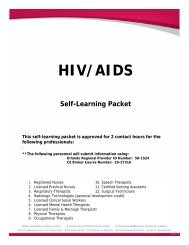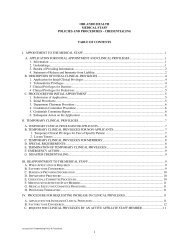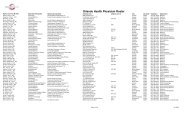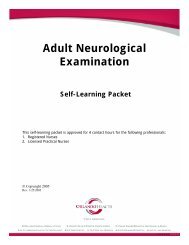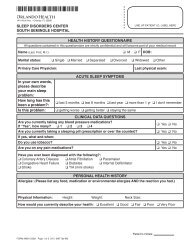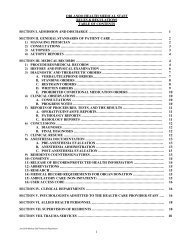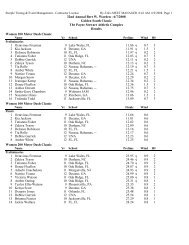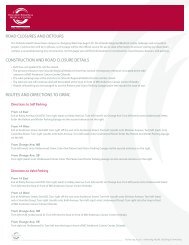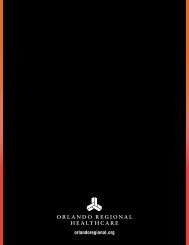Advanced Hemodynamics - Orlando Health
Advanced Hemodynamics - Orlando Health
Advanced Hemodynamics - Orlando Health
You also want an ePaper? Increase the reach of your titles
YUMPU automatically turns print PDFs into web optimized ePapers that Google loves.
<strong>Advanced</strong> Hemodynamic Monitoring<br />
for gas exchange to occur. Otherwise, if the pressure becomes too high, the intravascular fluid is<br />
forced into the alveoli which results in impaired gas exchange and pulmonary edema.<br />
Reading<br />
obtained<br />
from the<br />
PA-<br />
Catheter<br />
Once the PAC is inserted, the pulmonary artery pressures can be continuously measured. More<br />
specifically, the pulmonary artery systolic (PAS) and the pulmonary artery diastolic (PAD) will be<br />
displayed. The PAS pressure reflects the amount of pressure necessary to open the pulmonic valve<br />
and eject the blood into the pulmonary circulation. The PAD pressure reflects the amount of<br />
resistance in the lungs between heart beats.<br />
As previously mentioned, the PAS and PAD both reflect right-sided pressures. When elevated, this<br />
indicates a problem with the lungs. In addition, assessment of the PA pressures can also help in<br />
distinguishing between a primary lung problem and a lung problem caused by the heart. The<br />
pulmonary artery pressures will increase whenever the blood vessels in the lungs are constricted.<br />
This is also known as increased pulmonary vascular resistance (PVR). PVR is considered the<br />
afterload of the right ventricle. Conditions such as pulmonary hypertension, chronic hypoxemia, or<br />
pulmonary embolus can result in an increased PVR leading to elevated pulmonary artery pressures.<br />
As previously mentioned, once the PAC is inserted the tip rests in the pulmonary artery. An<br />
electronic signal is sent to the monitor which will display a waveform. This waveform may vary<br />
with respirations and the monitor will average this variation in its readings. This is why it is<br />
imperative that the clinician print out a copy of the wave form display to properly assess the value.<br />
The measurement should always be assessed at end expiration. In a spontaneously breathing patient<br />
the intrapulmonary pressures decrease slightly on inspiration, and increase on expiration. The<br />
opposite is true for a mechanically ventilated patient. In a patient that is mechanically ventilated the<br />
Copyright 2010 <strong>Orlando</strong> <strong>Health</strong>, Education & Development 18



